On the edge of Inverness Country, Cape Breton nestled on the shore of the beautiful, vast Bras d’Or Lake is the small community of Whycocomagh and the humbly luxurious Keltic Quay Lodge – a perfect starting (and ending) point for anyone visiting Nova Scotia’s famous Cabot Trail.
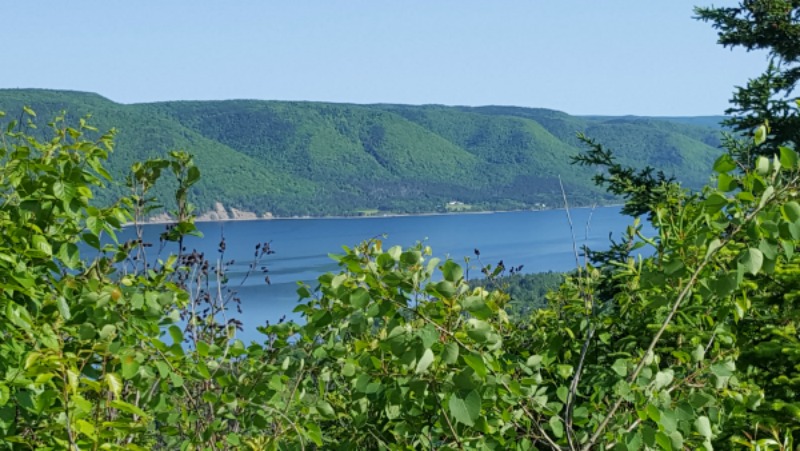
Cape Breton in the summertime
Whereas most visitors associate the highlands of Cape Breton with the lush green foliage and deep blue water of summer or the wild amber and fire-red leaves of autumn, my recent visit to Whycocomagh was during the dead of winter. At this time of year, the hills are capped with snow, and the brackish waters of Bras d’Or Lake (a mixture of salt and freshwater) covered in a thick layer of ice.
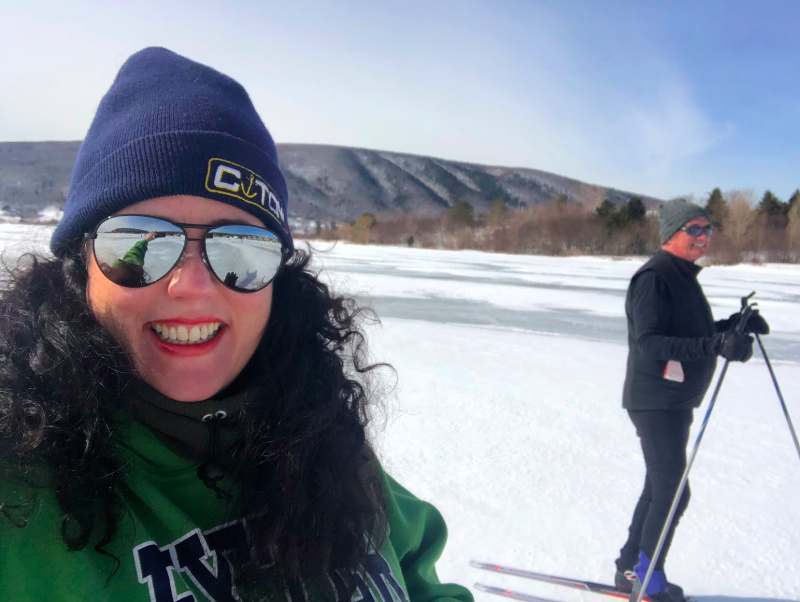
The Bras d’Or Lake in the wintertime/credit: Helen Earley
With a suitcase stuffed with woolly socks, sunglasses and thermal mittens, my mission was to relax in the company of a group of friends, but also to explore what outdoor adventures Cape Breton has to offer the winter tourist. On our itinerary: snowshoeing, cross country skiing, but first, an introduction to Cape Breton music, art and dance.
The Keltic Quay has a selection of clean, modern self-catering cottages, each with a full kitchen, living room with electric fireplace, bathroom, washer and dryer and a balcony overlooking the lake. There is also a main lodge for common use.
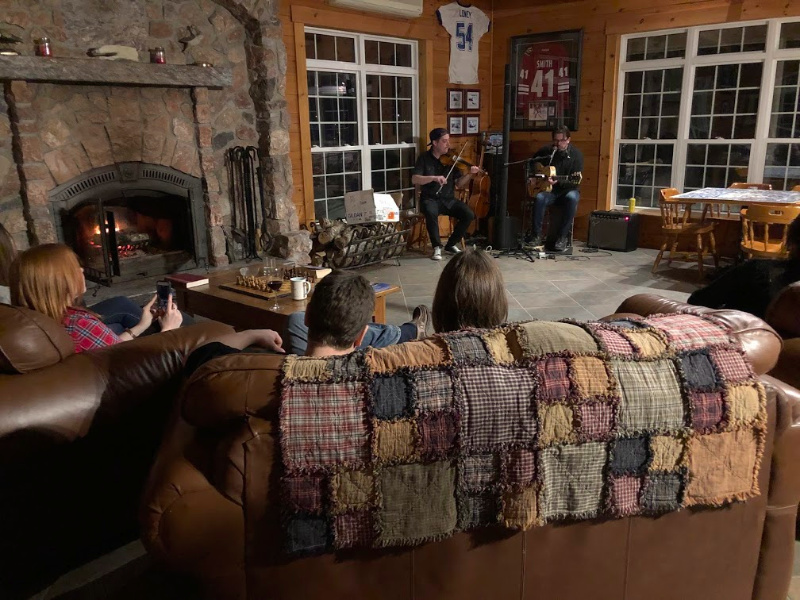
The main lodge at Keltic Quay – cosy/credit: Helen Earley
This lodge, an enormous, wood-panelled room with a vaulted ceiling, contains every diversion one could ask for: a pool table, shuffleboard table, poker table, cribbage table – and best of all, a huge roaring fireplace flanked by large, soft leather sofas, and stoked at regular intervals by friendly innkeeper, Renie Rogers, who lives on the property, and is on hand to cater to guests’ needs.
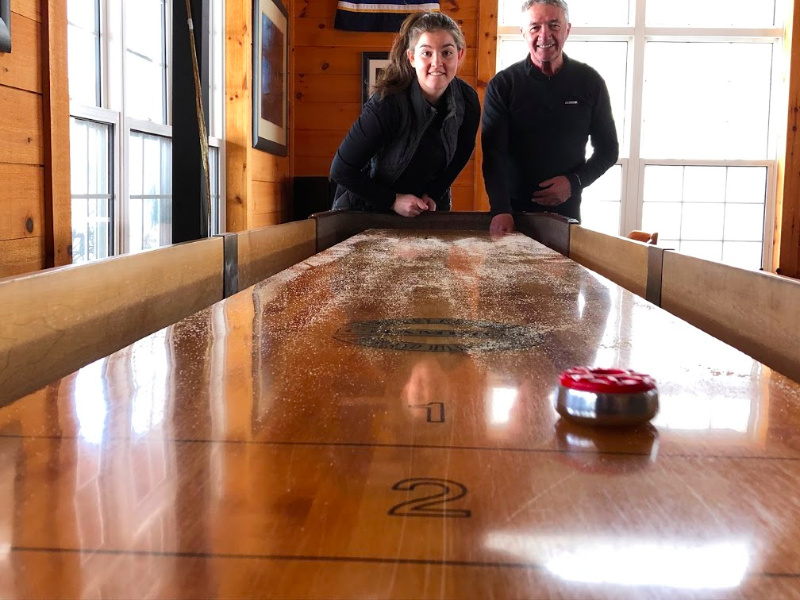
Possibly the best shuffleboard table in the Maritimes/credit: Helen Earley
Our first evening at Keltic Quay began with a traditional Mi’kmaq smudging ceremony led by a group of women from the nearby Eskasoni First Nation – the largest Mi’kmaq community in the world. The smudge is a sacred tradition where smoke from a burning stick containing fragrant herbs and plants, including sage, tobacco and cedar, is wafted onto a person’s body- in this case, using an eagle’s feathers. The person being smudged brings their hands up to wash the smoke over their head, ears, mouth and heart, so that they will not think, hear, say or feel negative thoughts. By the end of our smudging ceremony, the air in the lodge was filled with sweet smoke, and the room had taken on a warm, energetic glow.
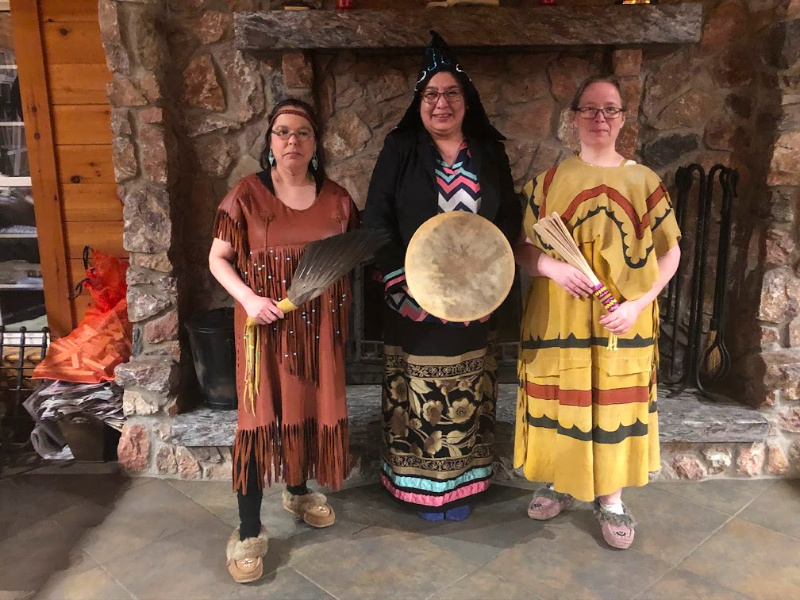
Glynis Sylliboy, Natasha Herney and Audrey Johnson from the Eskasoni Cultural Centre/credit: Helen Earley
Next, we were treated to a dance lesson, showcasing the basic steps of three Mi’kmaq dances. My favourite was the first, the Friendship Dance, which has a variation in most indigenous cultures across North America. Holding hands, our circle of friends walked into the centre and out again, raising and lowering our arms. The motion reminded me of an advancing and retreating tide.
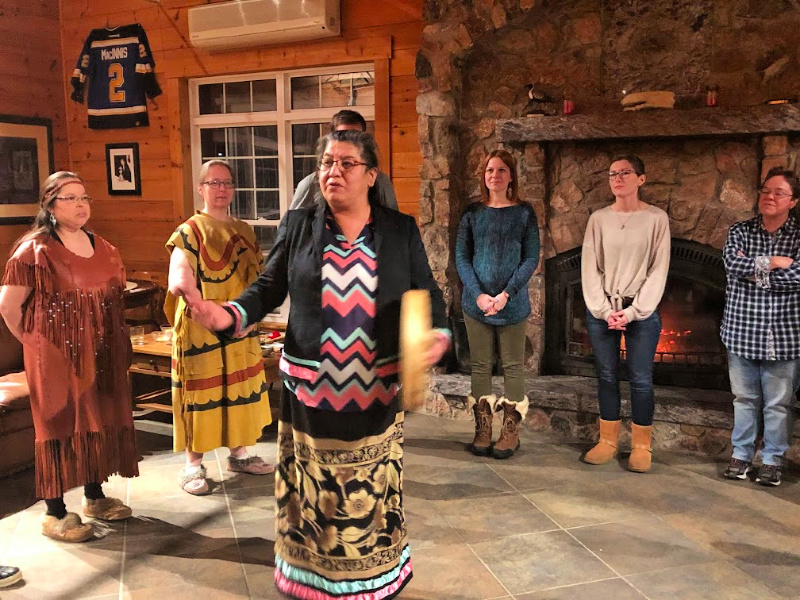
Tuition in Mi’kmaq dance/credit: Helen Earley
After the dance, it was story time, where, in soporific tones, we were told the story of Glooskap and the wind. The evening ended with a lesson on language and medicine, and the chance to make a Mi’kmaq craft – a small bookmark that used the same skills necessary for Mi’kmaq basket-weaving.
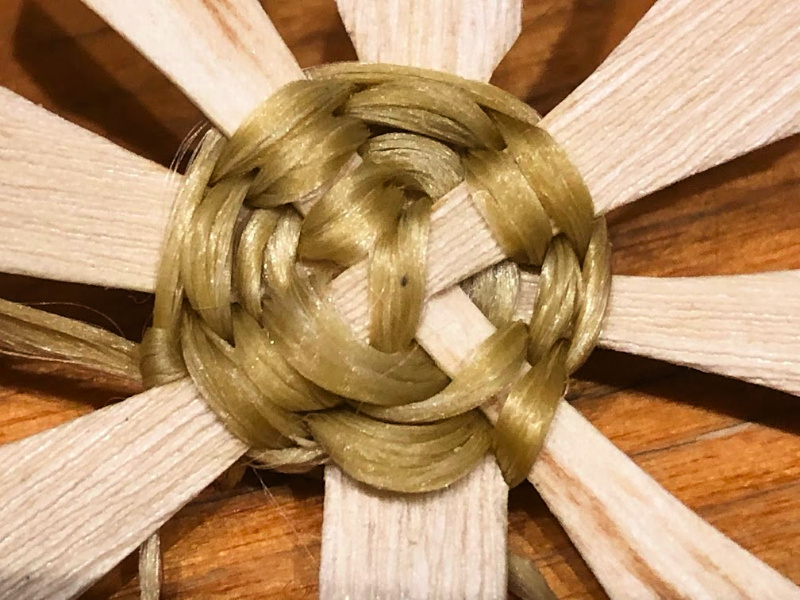
Mi’kmaq weaving/credit: Helen Earley
The following day, we tried out some snowshoes and skis, loaned to us by the local recreation department. Since the Bras d’Or lake was frozen thick, there was no better place to practice than on the snow-covered ice itself, where we spent a genuinely exhilarating morning stomping and gliding over the surface.
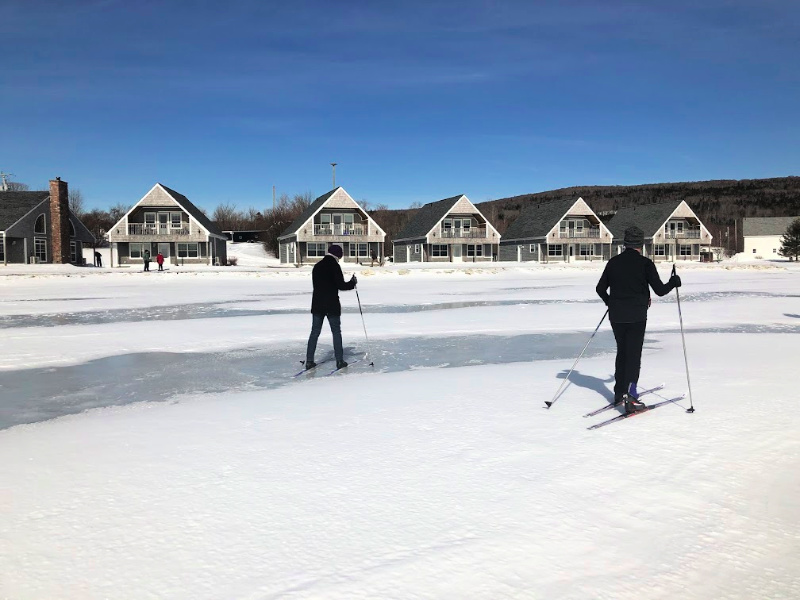
Skiing on water, on the Bras d’Or/credit: Helen Earley
That afternoon, after a hearty lunch catered by local favourite, Charlene’s Bayside Restaurant, we snowshoed in Whycocomagh Provincial Park, where there was a trail for everyone, including the skiers, snowshoers, and birdwatchers in the group.
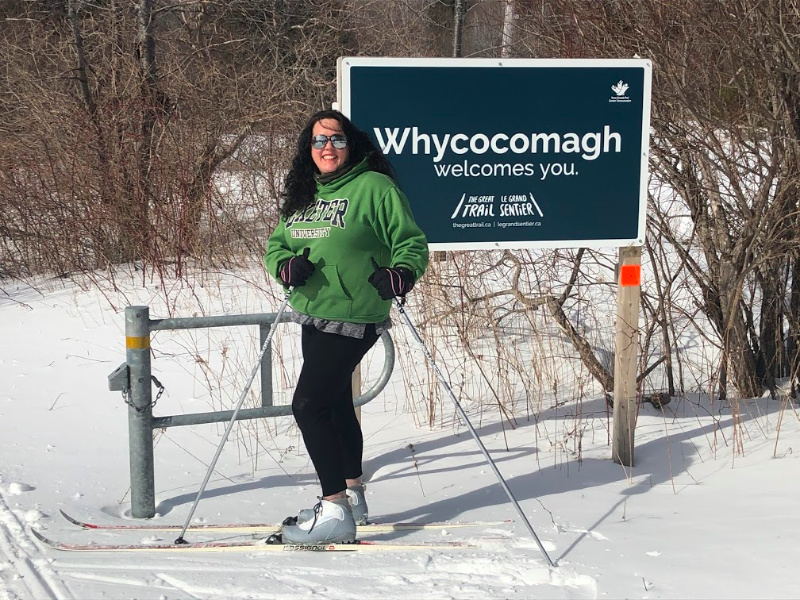
Whycocomagh/credit: Helen Earley
On our final night in Whycocomagh, dinner was Charlene’s famous seafood chowder – a generous bowl of huge succulent chunks of lobster and seafood in a delicious buttery broth, served with a fresh scone, and – you guessed it – more seafood in the form of sweet, skewered shrimp. Dessert was a massive brick of gingerbread cake served with a “hard sauce” (secret ingredient: a touch of Amaretto). Charlene’s home-cooking is renowned far and wide, and even nationally since it was featured in the first series of the Food Network Canada’s “You Gotta Eat Here.”
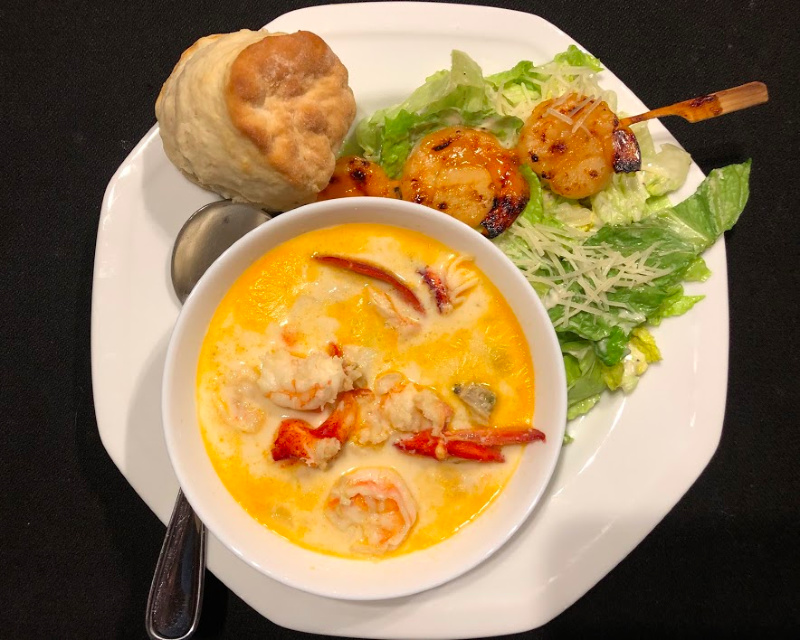
The famous seafood chowder from Charlene’s Bayside Restaurant/credit: Helen Earley
The cherry on the sundae, so to speak, was an evening performance by local singer-songwriter Keith Mullins and fiddler, Colin Grant, who played a range of original songs, interspersed with some popular favourites and of course, traditional Celtic music.
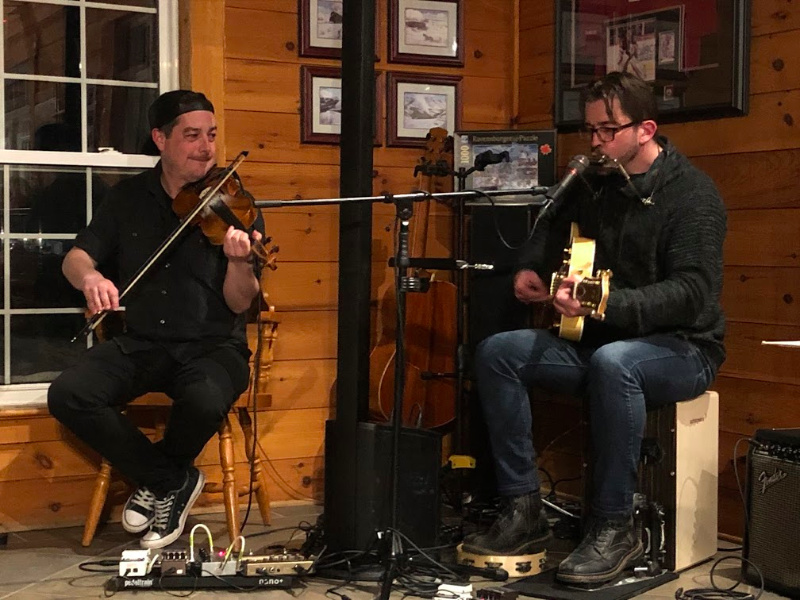
Singer-songwriter Keith Mullins and fiddler Colin Grant at Keltic Quay/credit: Helen Earley
As the night grew late, the intensity of the music increased, until finally, our group pushed aside the sofas and took to the hardwood floor to dance. Since a few of the members of the group were from Cape Breton and knew how to step dance, we found ourselves being cajoled into two lines, facing each other, holding hands.
Giddy with the sound of the fiddle, I danced toward the facing line, my arms in the air, and was reminded of the night before, when during the Mi’kmaq Friendship Dance, we had performed the same basic step, back and forth like the tide.
Winter in Whycocomagh Quick Guide
Cape Breton Island, Nova Scotia, has a fantastic range of summer and winter activities, perfect for family adventures.
Keltic Quay in Whycocomagh is open year-round and has special rates for long-stay and low season. 1-877-350-1122
Eskasoni Cultural Journeys is an interpretive centre that celebrates Mi’kmaq culture. It is open regularly from May through to October. Tours must be booked in advance. 902-322-2279
The Inverness County Recreation/Tourism Department rents skis, snowshoes and walking poles. 902-787-2274
The Farmer’s Daughter Pick up homemade baked goods, frozen foods to bake in your cottage, outdoor clothing and gifts. Snowshoe and Cross Country Ski rentals are available here too (Snowshoes $10 a day $65 a week / Skis, boots, poles $15 a day $80 a week.) 902 756 9042
Charlene’s Bayside Restaurant has the best food in town. 902-756-8004
The Alexander Graham Bell National Historic Site is located in nearby Baddeck and is well worth a visit. Check for opening times. 902-295-2069
The West Mabou Family Square Dance is one of several year-round dances in the area, and a favourite spot for both locals and visitors.
Helen Earley is a Halifax-based writer. She was a guest of Destination Cape Breton.




